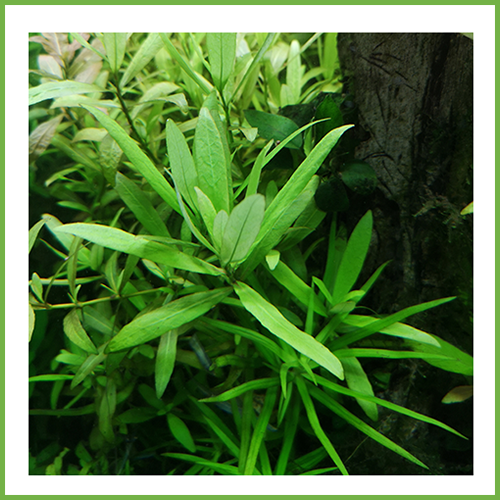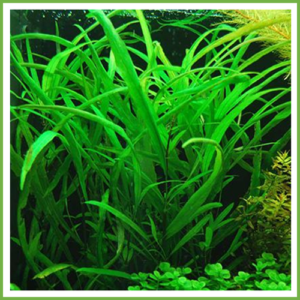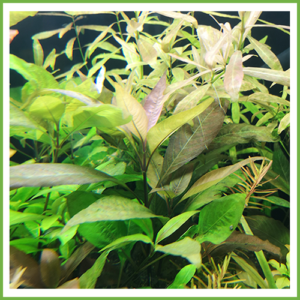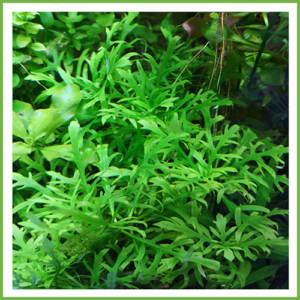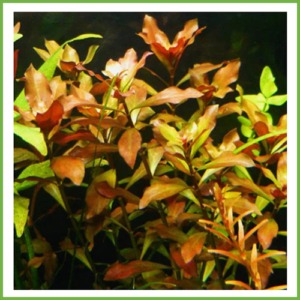Description
Hygrophila Polysperma
Price per stem, grown submerged.

Overview
Hygrophila polysperma (commonly known as Dwarf Hygro or Indian Swampweed) is a popular freshwater aquarium plant valued for its attractive appearance, ease of care, and versatility. Native to Southeast Asia, it’s a fast-growing stem plant that adapts well to a variety of aquarium conditions, making it a favorite among beginner and experienced aquarists alike. Below is a detailed overview covering its characteristics, care requirements, planting and propagation, maintenance, challenges, tips, and recommendations.
Care Requirements
Lighting: Low to high (20–100 µmol PAR). Low light results in slower growth and smaller, greener leaves, while high light promotes denser growth and reddish hues.
Water Parameters:
- Temperature: 20–28°C
- pH: 6.0–8.0
- Hardness: Soft to moderately hard (3–15 dGH)
Substrate: Not strictly required, as it can grow in gravel, sand, or nutrient-rich substrates like aquasoil. Root tabs can enhance growth in nutrient-poor substrates.
Nutrients: Benefits from liquid fertilizers (e.g., nitrogen, phosphorus, potassium, and micronutrients like iron).
CO2: CO2 injection is optional but boosts growth and vibrancy.
Tank Requirements: Suitable for small to large tanks (minimum 40 litres for manageable growth). Prefers moderate water flow; too strong a current may damage delicate stems.
Planting and Propagation
Planting:
- Stem Planting: Cuttings (10–15cm) can be planted directly into the substrate. Remove lower leaves and bury the stem 2–5cm deep to encourage root growth.
- Floating: Can be left floating temporarily, but planting in substrate promotes stability and healthier growth.
- Arrangement: Plant in clusters for a bushy look or in rows for a structured background. Space stems 2–5cm apart to allow light penetration.
Propagation:
- Cuttings: Trim healthy stems just below a node (where leaves emerge) and replant the cuttings. The parent stem will continue to grow, and the cutting will develop roots within 1–2 weeks.
- Side Shoots: The plant naturally produces side shoots, which can be separated and replanted.
- Runners: In high-nutrient conditions, it may produce runners that can be cut and replanted.
- Speed: Propagation is rapid under good conditions, producing new plantlets within weeks.
Maintenance
- Trimming: Regularly trim stems to maintain desired height and shape. Use sharp scissors to cut above a node, and replant cuttings if desired. Remove dead or yellowing leaves to prevent decay.
- Nutrient Management: Monitor nutrient levels to avoid deficiencies (e.g., yellowing leaves may indicate nitrogen or iron deficiency). Dose liquid fertilizers weekly or per manufacturer instructions.
- Cleaning: Gently rinse leaves during water changes to remove algae or debris.
- Water Changes: Perform 20–30% water changes weekly to maintain water quality, as this plant thrives in clean water.
- Pruning Overgrowth: Fast growth can lead to overcrowding; thin out dense areas to ensure light and nutrients reach all parts of the plant.
Challenges and Tips
Challenges:
- Overgrowth: Its rapid growth can overwhelm smaller tanks or shade other plants.
- Algae Growth: Dense growth can trap debris, encouraging algae.
- Nutrient Deficiencies: In low-nutrient tanks, leaves may yellow or stunt.
- Invasiveness: In some regions, it’s banned due to its potential to invade natural waterways.
- Lighting Imbalance: Too little light causes leggy growth; too much may burn delicate leaves.
Tips:
- Regular trimming and strategic planting can control its spread. Use pruned cuttings to propagate or share with other aquarists.
- Maintain moderate water flow and clean leaves periodically.
- Use root tabs or liquid fertilizers, especially iron for vibrant colouration.
- Never release this plant or aquarium water into the wild. Dispose of trimmings responsibly.
- Pair with compatible tank mates like small fish (tetras, guppies) which benefit from its cover.
- Use in aquascaping to create a lush, natural look; combine with foreground plants like dwarf hairgrass or midground plants like Anubias.
- If growth is too slow, check for nutrient deficiencies or increase lighting/CO2 gradually.
Recommendation
- For Beginners: Hygrophila polysperma is an excellent choice due to its low maintenance and adaptability. Start with a small bundle (5–10 stems) in a 10–20-gallon tank with basic LED lighting and liquid fertilizers.
- For Aquascapers: Use it as a background plant in larger tanks (20+ gallons) to create a dense, green backdrop. Combine with red or contrasting plants (e.g., Ludwigia repens) for visual interest.
- For Nutrient Control: Its fast growth makes it ideal for absorbing excess nitrates and phosphates, helping to prevent algae blooms.

